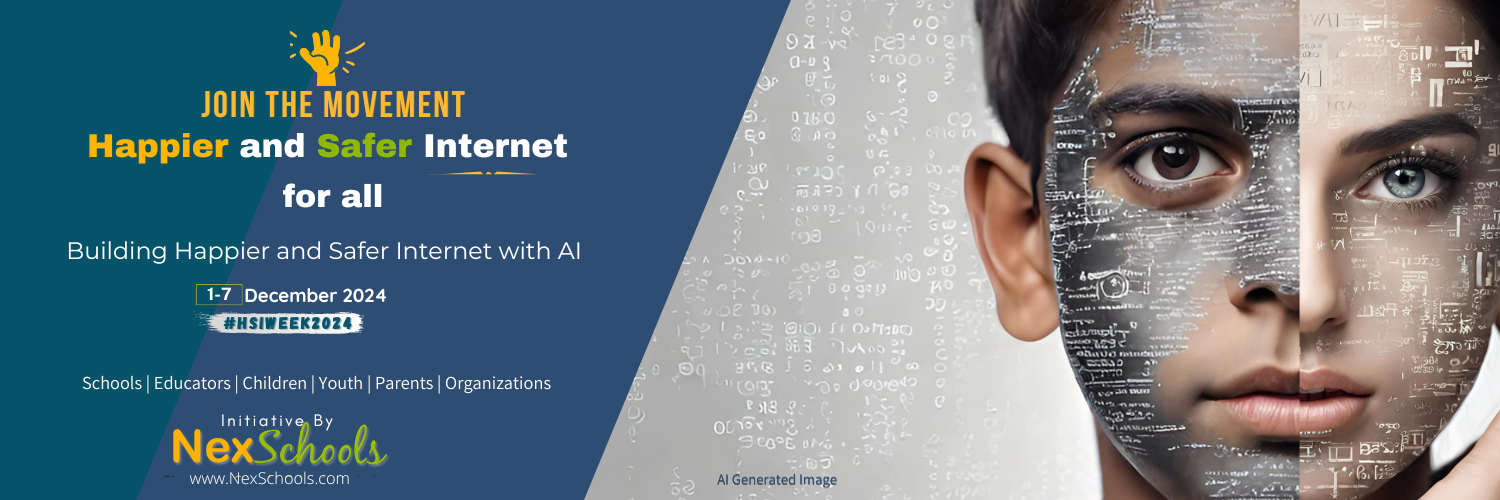Teenagers today have developed a remarkable ability to navigate the internet, effortlessly embracing their digital skills. From the vast array of social media connections to the abundance of educational resources, the online world offers a wealth of opportunities. However, this digital world also hides potential dangers, with deepfakes becoming a significant worry.
Understanding Deepfakes and Their Disturbing Nature
Deepfakes are a result of cutting-edge artificial intelligence technology that can expertly manipulate videos and audio recordings, producing remarkably realistic results. These technologies have the ability to easily alter a person's face, voice, and body language, giving the impression that someone said or did something they never actually did.
Case Study: Taylor Swift and the Influence of Deepfakes
In 2023, Taylor Swift fell victim to a harmful AI manipulation. Online, there were deepfakes that emerged showing her in compromising situations, which caused a great deal of distress for Swift and her fans, and also brought up ethical and legal concerns. Although copyright law may not provide a complete solution, it has been reported that Swift considered taking legal action against the creators for using her image inappropriately and causing emotional distress. This incident highlights the potential risks associated with deepfakes, especially when it comes to individuals in the public eye. With the rapid advancement of deepfake technology, it is becoming increasingly challenging to differentiate between authentic and manipulated media. This emphasizes the importance of implementing regulations to safeguard individuals and combat the spread of misinformation. The Taylor Swift case highlights the significance of obtaining user consent and promoting responsible AI development in order to establish a more secure online environment.

The Adverse Effects of Deepfakes on Teenagers
Misleading Claims
Deepfakes have the potential to spread misleading information, causing confusion and eroding trust. Picture a deepfake video featuring a widely recognized public figure spreading misinformation or endorsing dangerous actions. Such videos have the potential to spread rapidly, shaping public sentiment and leading to widespread dissemination of inaccurate information. A study conducted by the Massachusetts Institute of Technology (MIT) revealed that false information has a significantly higher rate of spread on social media compared to true information. If deepfakes are not properly regulated, they have the potential to greatly increase the dissemination of misinformation.
Addressing Cyberbullying and Harassment
Teenagers are especially susceptible to the harmful effects of cyberbullying, and the use of deepfakes can exacerbate this problem. A recent study conducted by the Pew Research Center found that a considerable number of American teenagers have unfortunately faced online bullying or harassment. This concerning discovery brings attention to the susceptibility experienced by individuals in this particular age group. An individual with malicious intent could potentially create a deepfake video of a teenager engaging in embarrassing or inappropriate behavior and distribute it on the internet. The victim could potentially experience significant emotional distress, social isolation, and harm to their reputation.
Privacy Violations
Deepfakes can be used in a harmful way, exploiting the digital presence of teenagers. Private photos or videos can be misused by unscrupulous individuals to create compromising deepfakes, leading to possible blackmail and extortion. Based on data from the Cyberbullying Research Center, a significant number of teenagers have unfortunately experienced cyberbullying in their lives. The emergence of deepfakes further complicates this already distressing problem.
Ensuring Safety in the Age of Deepfakes
While deepfakes do pose legitimate risks, teenagers can take steps to protect themselves and safely navigate the digital world.
Stay informed
It is important to understand how deepfakes work in order to protect yourself. There are plenty of online resources and educational materials available to help you improve your skills in detecting deepfakes.
Think carefully about the choices you make.
Before posting anything online, it's crucial to take a moment and verify its credibility. Approach sensational or controversial videos and audio recordings with a critical mindset, especially if they seem overly exaggerated. Make sure to double-check information from trustworthy sources and avoid spreading unverified content.
Protecting Your Privacy
It is important to exercise caution when sharing personal information and media online. Ensure your privacy settings on social media platforms are set to your preferences, allowing you to limit the audience for your posts and safeguard your personal photos. Please exercise caution when sharing any sensitive or compromising material that could potentially be misused for creating deepfakes.
Report Potentially Harmful Content
If you happen to stumble upon a video or audio clip that raises suspicions of being a deepfake, it would be wise to report it to the platform where you discovered it. Social media companies are actively working on enhancing their capabilities and guidelines to identify and eliminate deepfake content. Reporting suspicious material helps create a safer online environment.
Request Assistance
If you ever find yourself in a situation where you are targeted by a deepfake or facing cyberbullying, remember that seeking help is crucial. Seek guidance from a reliable adult figure, such as a parent, teacher, or school counselor. Numerous organizations and hotlines provide assistance and resources for addressing online harassment and abuse.
The Importance of Parents and Educators
Parents and educators have a vital role in guiding teenagers through the digital landscape, ensuring their safety and well-being. Here are some ways they can assist young individuals in dealing with deepfake technology:
Open Communication
Create a welcoming atmosphere that encourages teenagers to openly share their online experiences. Promote open and transparent discussions about digital safety, including the potential dangers and actualities of deepfakes.
Digital Literacy Education
Incorporate digital literacy education into school curricula and encourage discussions at home. Help teenagers develop the skills to analyze online content, identify deepfakes, and safeguard their privacy.
Promote Responsible Online Behavior
Exemplify responsible online behavior to set a positive example. Teach teenagers the importance of fact-checking, valuing privacy, and practicing responsible social media usage.
Keep an eye on online activity
While it's important to respect teenagers' privacy, it's also crucial to monitor their online activity to protect them from potentially harmful content. Utilize parental control tools and establish suitable boundaries for internet usage.
Offering a range of helpful resources and assistance
Provide teenagers with valuable resources and support services, including hotlines, counseling services, and online safety organizations. Ensure that individuals are aware of the resources available to them in case they face any difficulties while using the internet.
Conclusions
The digital age presents an abundance of opportunities for connection, learning, and creativity. However, it also brings about new challenges, like the emergence of deepfakes. By recognizing the potential dangers of deepfakes and implementing precautionary measures, teenagers can confidently and securely navigate the digital landscape. Education, critical thinking, and open communication are essential for fostering a constructive online experience. Together, we can empower young people to flourish in the digital age while ensuring their safety from the potential risks of deepfake technology.
Contact Us for Blogging & Cyber Safety Workshop
Stay Tuned
.png)
For upcoming activities and contest for Teachers, Schools and ofcourse all the Lil Bloggers
Register Your School Sign Up Parents
